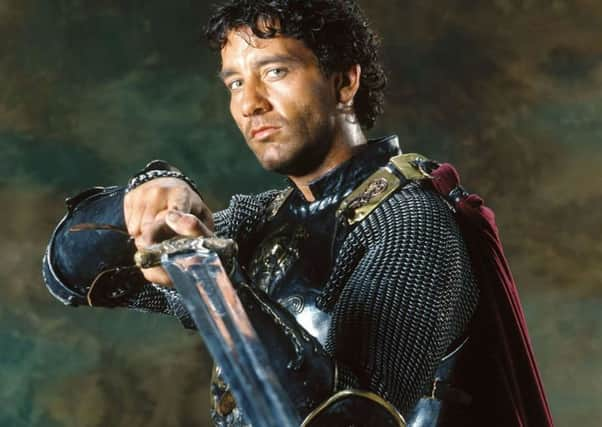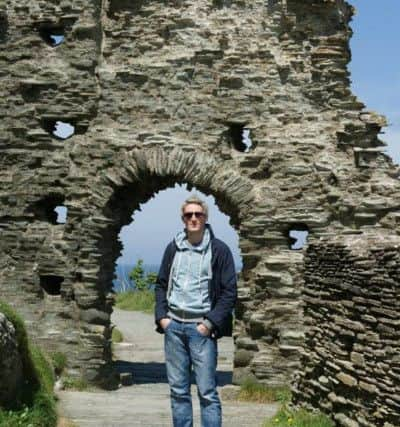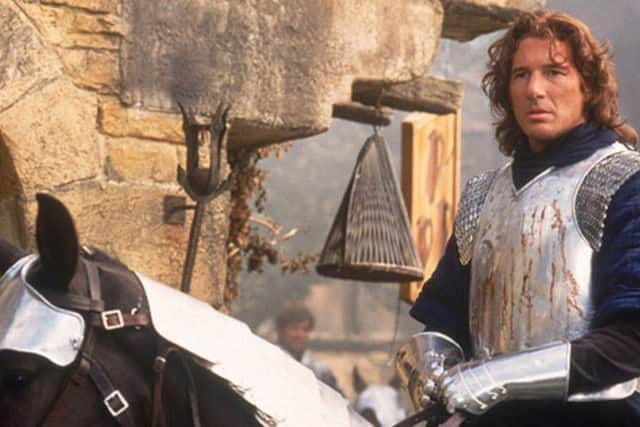Why King Arthur was a Yorkshireman and Camelot was in Huddersfield


There are a few places in Britain which lay claim to being the home of King Arthur. Until now that list, which includes Cornwall, pretty much all of Wales and an Edinburgh hill, hasn’t featured Slack in Huddersfield.
However, Arthurian obsessive Simon Keegan is determined to right that wrong in a book which not only claims that the largely unremarkable village was the site of the legendary Camelot, but also that King Arthur was not born at the grand Tintagel Castle on the Cornish coast, but was in fact from Catterick.
Advertisement
Hide AdAdvertisement
Hide Ad“He is the greatest folk hero who ever lived,” says Keegan. “King Arthur is more famous than Robin Hood and William Tell, he comes with a cast of characters like the dashing Lancelot and the wizard Merlin, but most people can’t seem to agree on who he actually was. In early records he was depicted as the saviour of Britain after the Romans left, a man who was victorious in a dozen battles, but over the next 1,500 years he was variously cast as everything from a chivalrous king to a brutal warlord.


“I just wanted to get to the truth.”
Like a lot of people, Keegan says he was first introduced to King Arthur via the big screen. As a child growing up in Liverpool he watched Richard Gere turn Lancelot into a dashing romantic lead in First Knight and it was a rare family holiday that didn’t include a link to the Round Table.
“Whenever we went to Cornwall and Wales I’d always insist on going to places which had a connection to the legend. I guess for a while I thought he was just a fictional character, but from the point I discovered he was a real king I’ve been keen to find out as much as possible about him. Little did I know back then that King Arthur was actually a northerner.”
Keegan’s new book, the aptly titled Pennine Dragon, rewrites Arthurian history and took years of painstaking research in dimly lit archives as he scoured original source materials for clues.


Advertisement
Hide AdAdvertisement
Hide Ad“The only agenda I set out with was to separate the fact from the fiction. I had to translate much of what had been written centuries ago from Latin, so I have spent a lot of time pouring over dictionaries.”
While King Arthur is often portrayed as a medieval ruler of knights and wizards, like Lancelot and Merlin, he in fact ruled in the Dark Ages just after the Romans withdrew from Britain and before the Saxon invasion was completed. According to Keegan, some of the first mentions of him can be found in the writing of the northern bards, who lived around the same time and who place him in God’s own county.
“I’m absolutely confident that Arthur can be identified with a ruler called Arthwys ap Mar. He lived from 470 to 540AD, he was born at a settlement in what is now Catterick and his father was also a king in the Yorkshire area.”
While Cornish tourism has done a pretty good job at exploiting the Arthurian legend with interactive maps and trails around the key sites, Keegan holds no truck with the idea this was the old king’s stomping ground.


Advertisement
Hide AdAdvertisement
Hide Ad“I think it is down to a misreading of ancient British geography. These days we tend to think that the Celts were confined to Scotland, Wales and Cornwall and that’s where the King Arthur legends have grown strongest.
“However, it wasn’t until the invasion of the Saxons that those divisions took place and Arthur was a key military leader during those bloody battles. It just doesn’t make sense for him to have been based in Cornwall.
“The Saxon forces were at their strongest on Britain’s northern frontier, so that had to be where Arthur was. For those not convinced, he also held a position called the Dux Bellorum - the Duke of Battles - which was also garrisoned in the north.”
Not content with declaring King Arthur a northerner, Keegan says that there is persuasive evidence that his Camelot castle was not in the Scottish capital - despite a hill in Holyrood Park being named Arthur’s Seat - or on the site of Cadbury Castle in Somerset. Instead he says it was located somewhere between Mac’s Trucks Sales and Outlane Golf Club on the outskirts of Huddersfield.


Advertisement
Hide AdAdvertisement
Hide Ad“Camelot is only introduced as Arthur’s castle in later medieval romances, but there would seem to be some grain of truth in the name and if we accept that he came from the north it would make sense that his castle was here too. The Romans established a small military fort at Slack, which they called Camulodunum after the ancient Celtic War-God, Camulos.
“Until recently it was thought to have been a fairly minor fort which was abandoned in the third century. However, new evidence has come to light that it was in fact a magnificent fortress, with a giant amphitheatre where up to 2,000 people would pack in to watch horsemanship displays by the Roman cavalry.
“A dig in 2007 also produced evidence that pointed to activity on the site long after the supposed abandonment of the fort and experts believe that it was occupied for at least another 200 years. How could this not be Arthur’s Camelot?”
Keegan’s theories might not be entirely watertight, but he says he has not as yet received any negative response from other Arthurian experts.
Advertisement
Hide AdAdvertisement
Hide Ad“With any historical writing there is always an agenda. A generation or two after King Arthur you find his name mentioned in numerous sources and all of the sudden kings all over the country start to name their sons Arthur. He was clearly someone who was revered and everyone wanted to find some way to be associated with him, which I think is why he features as a hero in almost every Welsh folk tale.
“However, when you scratch beneath the surface, there is often very little concrete evidence to support these myths.”
With 2016 the 1,500th nniversary of the battle in which King Arthur famously defeated the Saxons, Keegan now believes that it’s time for the north - and Yorkshire in particular - to reclaim King Arthur as its rightful son.
“The Battle of Badon was King Arthur’s Waterloo. The Wikipedia entry says the exact date and location is unknown, although some people believe it took place on the site of what is now modern day Bath. However, all my research points to a different, more northern location. I believe that Badon was in fact Buxton.
Advertisement
Hide AdAdvertisement
Hide Ad“There is no doubt that Arthur was a natural leader of men and I also get the impression that he was a pretty savvy military strategist, but there is so much more about him that we don’t know.
“Like Boudica he was a figure of British resistance who fought against oppression. Even a century or two on I suspect Britain’s fascination with him won’t have gone away, but it would be nice to think that eventually everyone will recognise him as the northerner her was.”
Pennine Dragon by Simon Keegan is published by New Haven Publishing priced £12.99.